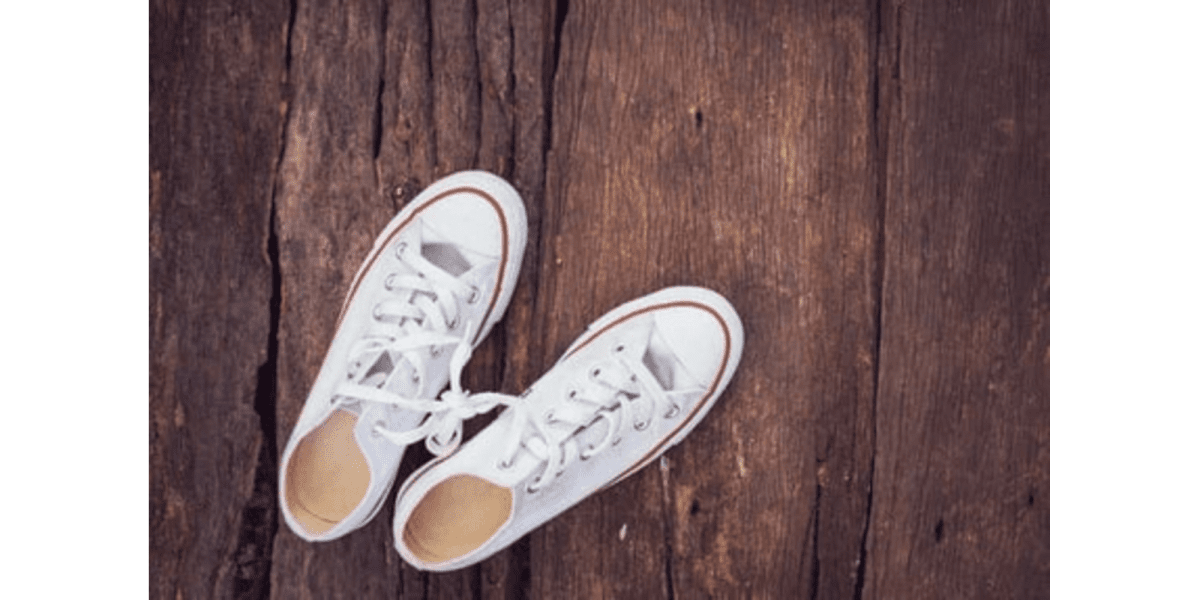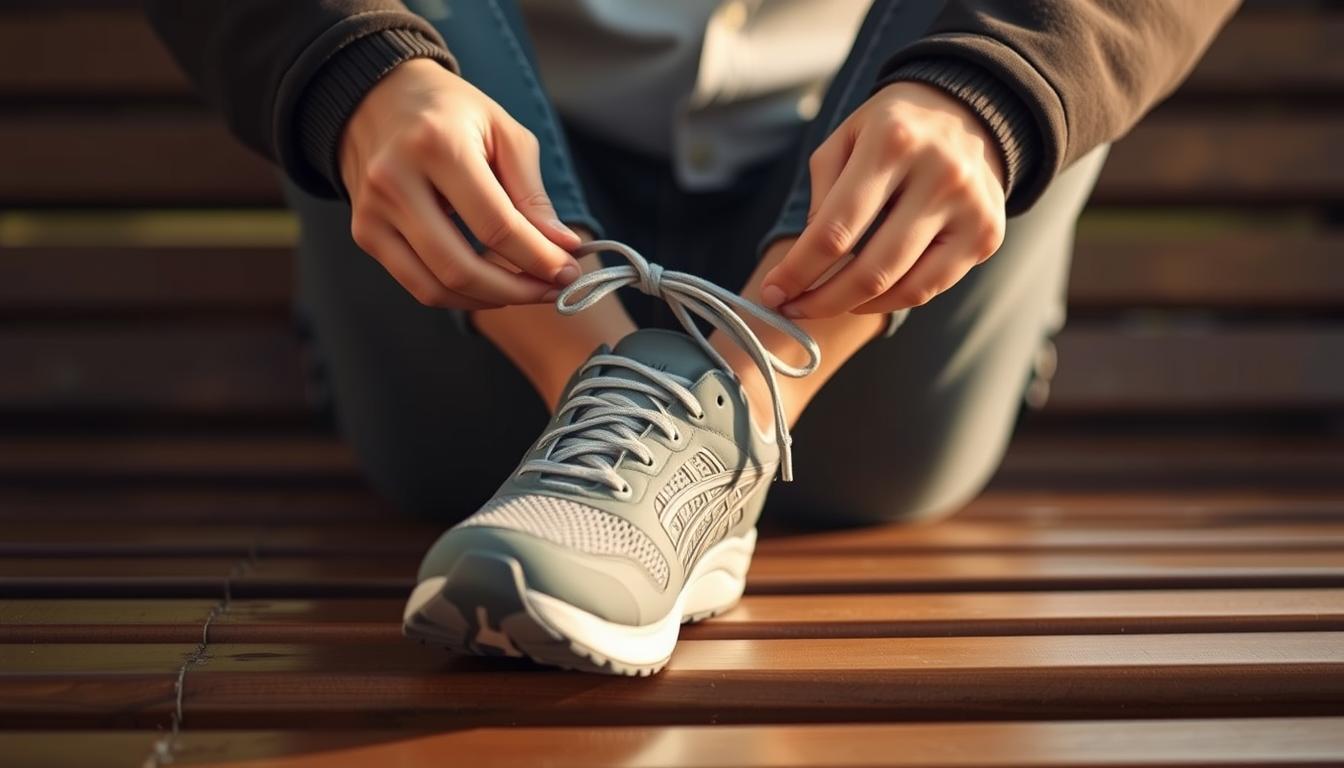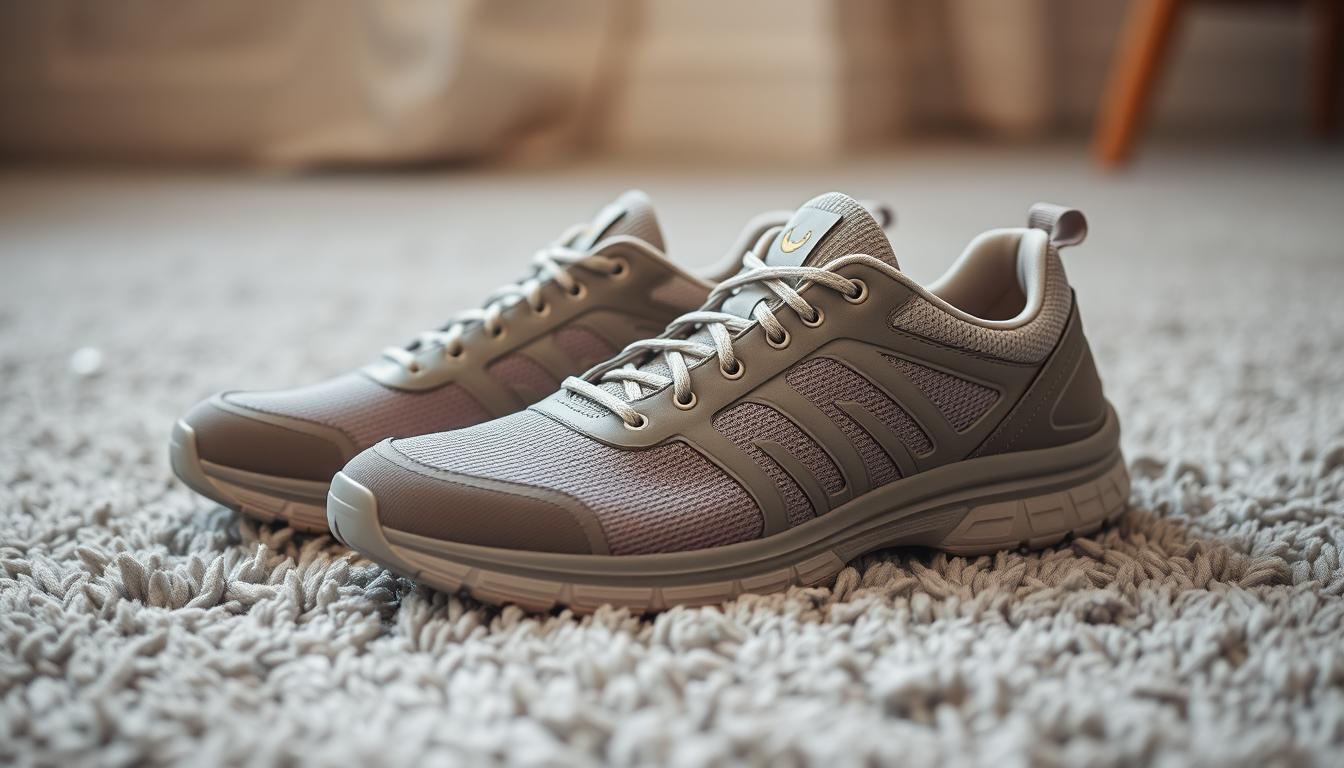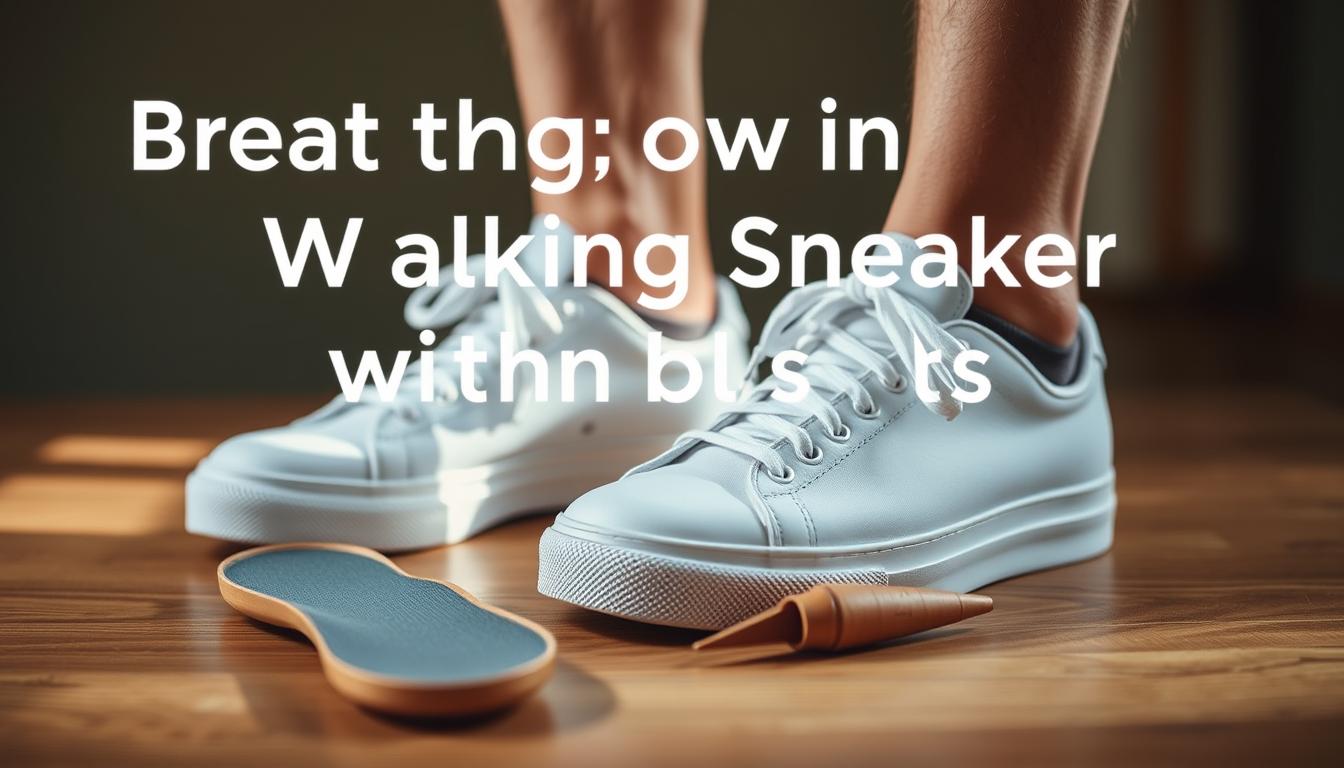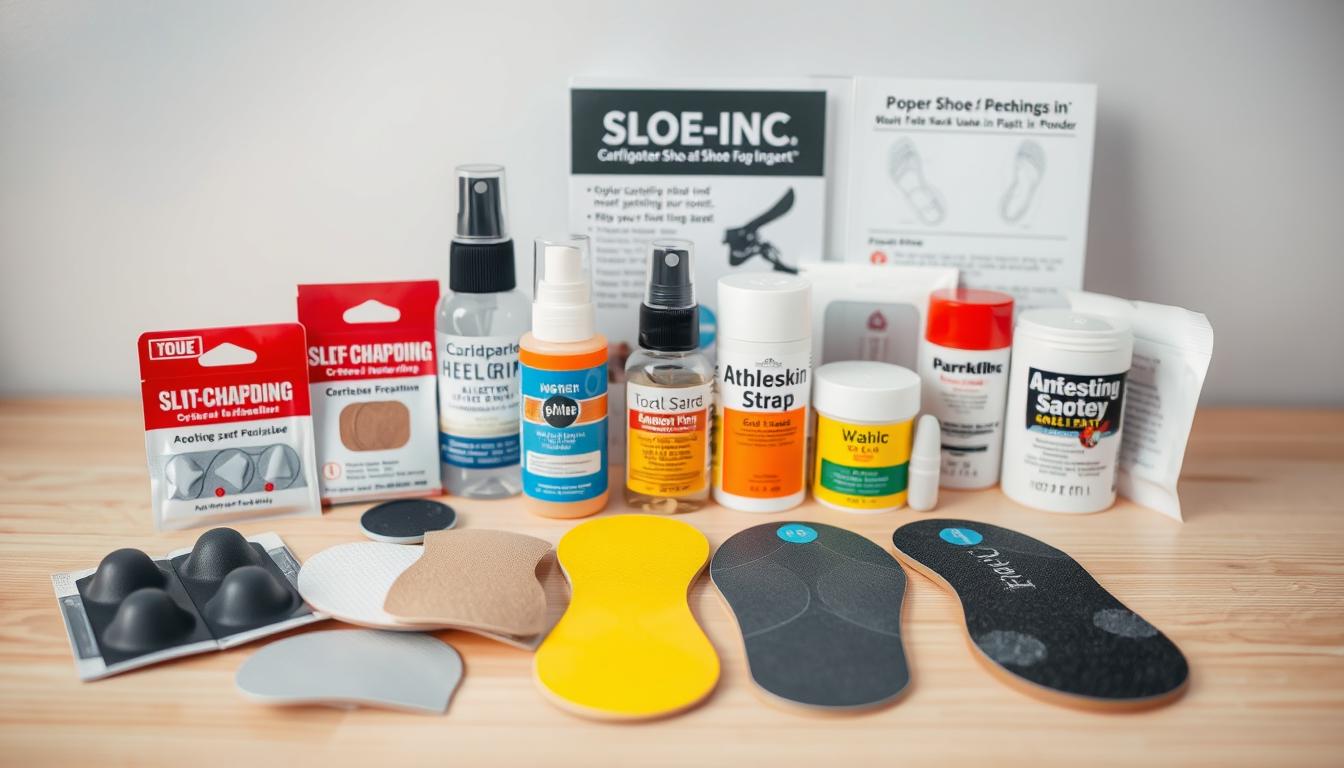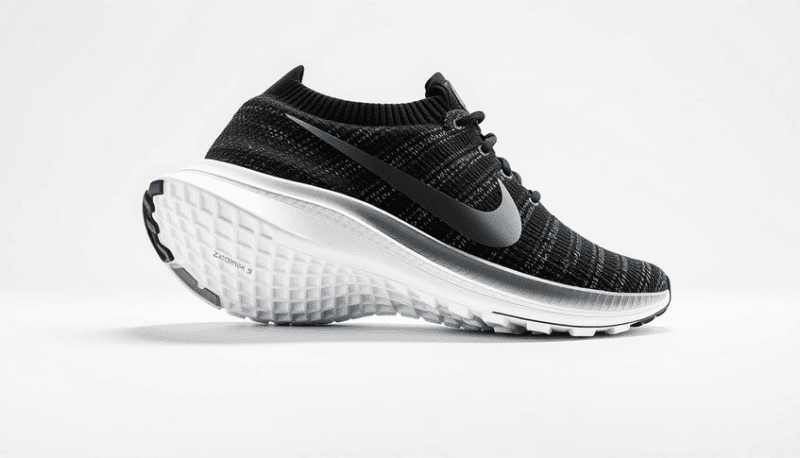How to Break Sneakers:
Breaking in new walking sneakers is key to comfort and avoiding blisters. Learning how to do this right can greatly improve your walks. It ensures your shoes fit well, making every step a pleasure.
Knowing how to break in shoes and avoid blisters is crucial. This article will show you how to break in your sneakers without blisters. You'll learn to keep your shoes comfortable for walking.
Introduction to Breaking in New Walking Sneakers
Breaking in shoes takes time and the right methods. By doing it correctly, you can enjoy walking without discomfort. It's a skill every walker should know.
Key Takeaways
- Breaking in new walking sneakers is essential for comfort and preventing blisters.
- Properly broken-in sneakers provide comfortable footwear.
- Learning how to break in new walking sneakers without blisters can make a significant difference in your walking experience.
- Understanding the process of breaking in new shoes can save you from discomfort and pain.
- Following the right steps can help you enjoy comfortable footwear and prevent blisters.
- Breaking in new shoes requires patience and the right techniques.
Why Proper Breaking in of Walking Sneakers Matters
Breaking in your walking sneakers right is key for a comfy walk. Shoe fitting tips help pick the right size and style. But, don't forget about the break-in time. A well-broken-in shoe can change your walk for the better.
Knowing the shoe materials helps figure out how long it takes to break them in. Leather shoes need more time than mesh ones. Tricks like wearing moisture-wicking socks and using blister shields help during this time.
- Improved comfort and reduced risk of blisters
- Enhanced performance and better support for your feet
- Increased durability and longer lifespan of the shoes
By following shoe fitting tips and breaking in your sneakers, you'll enjoy walking more.
Essential Preparation Before Breaking in Your Sneakers
Before you start wearing your new sneakers, make sure they're ready. Check the size to fit right, wear the same socks you plan to, and treat the shoes if needed. This prep helps avoid blisters and ensures comfort.
Try on your sneakers at home for a few hours before a long walk. This step helps your feet adjust and prevents blisters. You can also use shoe stretchers to keep the shoes in shape and comfy.
Here are some important steps to prepare your sneakers:
- Check the shoe size for a good fit
- Wear the same socks you'll use with the sneakers
- Apply treatments to the shoes if needed
- Use shoe stretchers to keep the shoes in shape
By following these steps, you can break in your sneakers without blisters. Remember, breaking in shoes takes time. Be patient and enjoy your new sneakers without discomfort.
How to Break in New Walking Sneakers Without Blisters: Step-by-Step Guide
Breaking in new sneakers takes time and a gentle approach. This avoids discomfort and ensures your shoes feel right. Start by wearing them around the house for a few hours. This helps your feet get used to the new shoes.
Next, you can wear them while doing chores or on a treadmill. This helps you avoid blisters. Using a shoe stretcher or breaking-in spray can also help. These are great tips for breaking in your shoes.
- Listen to your body and take regular breaks to avoid discomfort and blisters
- Gradually increase the walking distance and time over the next few days
- Use professional breaking-in tips to make the process smoother
By following these steps and tips, you can ensure a comfortable and blister-free breaking-in process for your new walking sneakers. This is key for keeping your shoes comfortable.
Tools and Materials for Safe Shoe Breaking-in
To make shoe breaking-in safer and more comfy, you need the right tools and materials. It's key to prevent shoe rubbing. Products like blister shields and moleskin can help avoid blisters and discomfort. Inserts, such as orthotics and arch supports, add extra cushioning and support.
For comfortable new shoe hacks, recommended socks and cushioning products are crucial. Thick socks and gel insoles can cut down friction and stop blisters. Many brands offer products for shoe rubbing prevention and blister relief in walking sneakers. Using these tools and materials ensures a safer and more comfy breaking-in process.
Here are some extra tips for safe shoe breaking-in:
- Use shoe stretchers or trees to help maintain the shape of the shoes and prevent creasing
- Apply moleskin or blister shields to high-friction areas
- Wear thick socks to reduce friction and prevent blisters
By following these tips and using the right tools and materials, you can enjoy a more comfortable and safe shoe breaking-in experience. This way, you'll get the most out of your new walking sneakers with effective blister relief and shoe rubbing prevention.
Common Mistakes to Avoid During the Break-in Process
When breaking in new walking sneakers, it's key to avoid common mistakes. These can cause new shoe discomfort and foot blisters. One big error is wearing the wrong size, which can lead to discomfort and injuries. Always follow footwear fit tips to ensure a proper fit before starting.
Another mistake is not gradually increasing walking distance and time. This can shock your feet and cause discomfort. Start with short walks and slowly increase the distance and time. This lets your feet adjust to the new sneakers. It's also important to listen to your body and take regular breaks to prevent foot blisters and discomfort.
- Wear the right size to prevent new shoe discomfort
- Gradually increase walking distance and time to avoid shock to the feet
- Listen to your body and take regular breaks to prevent foot blisters
- Follow footwear fit tips to ensure a proper fit
By avoiding these common mistakes and following these tips, you can make the break-in process comfortable. This ensures a successful experience with your new walking sneakers. It makes breaking in sneakers easy and helps prevent foot blisters.
Maintaining Comfort Throughout the Breaking-in Period
To keep your walks comfortable, it's key to care for your shoes daily. Clean and dry them to stop bacteria and fungus. A shoe sizing guide helps get a perfect fit, which is vital for comfort.
When wearing in new sneakers, patience is a must. Rushing can lead to blisters and discomfort. Here are some tips to remember:
- Wear the same type of socks you plan to wear with the shoes
- Start with short walks and gradually increase the distance
- Pay attention to any signs of discomfort or pain
Daily Care Routine
Keeping up a daily care routine is important. Clean and dry your shoes. Also, store them in a cool, dry place.
Signs Your Sneakers Are Properly Broken In
Knowing when your sneakers are ready is easy. Look for a comfortable fit, less stiffness, and better flexibility.
Conclusion: Enjoying Your Perfectly Broken-in Walking Sneakers
Breaking in your new walking sneakers is key for lasting comfort and avoiding blisters. This article's guide helps you start your walking journey with perfectly broken-in shoes.
The break-in process varies for everyone and their shoe needs. Pay attention to your body, take breaks, and be patient. Your sneakers will soon fit your feet perfectly, offering better support, cushioning, and comfort.
If you face ongoing discomfort or find breaking in hard, get help from a professional. They can offer great advice and help you find the right fit for walking sneakers comfort.
Enjoy the process of breaking in your new shoes. Look forward to many comfortable walking experiences. With proper care, you'll master breaking in your footwear in no time.
FAQ
What should I do before breaking in my new walking sneakers?
Before you start wearing your new sneakers, make sure they fit right. Wear the same socks you plan to wear with them. Using shoe stretchers can also help keep the shoes in shape.
Wear them around the house for a few hours first. This will help you get used to them before going for a walk.
How can I break in my new walking sneakers without getting blisters?
To avoid blisters, start by wearing them around the house. This will help you get a feel for them. Then, slowly increase how far and how long you walk in them.
Listen to your body and take breaks when needed. You can also use a treadmill or do household chores in them. Professional tips like shoe stretchers or breaking-in sprays can also help.
What tools and materials can I use to make the shoe breaking-in process safer and more comfortable?
There are many tools and materials to make breaking in shoes easier. Use protective gear like blister shields and moleskin. Inserts like orthotics and arch supports can also help.
Wear thick socks and use gel insoles for extra cushioning. Shoe stretchers or trees can keep the shoes from creasing.
What are some common mistakes to avoid during the break-in process?
Don't wear the wrong size and don't rush the break-in process. Listen to your body and take breaks. A gradual approach is best.
How can I maintain comfort throughout the breaking-in period?
To stay comfortable, take care of your sneakers daily. Clean and dry them regularly. Look for signs that they're breaking in well, like a comfortable fit and less stiffness.
If you still feel discomfort or pain, see a podiatrist or shoe fitter. They can offer professional advice.
DISCLAIMER
This document is provided for general information purposes only and should not be relied upon as providing legal advice, technical, or specific operational guidance to the reader, whether as to the practices described in the document or the applicable legal requirements and regulations. SAVE ON SNEAKS expressly disclaims any responsibility for liability arising from or related to the use or misuse of any information in this document.
